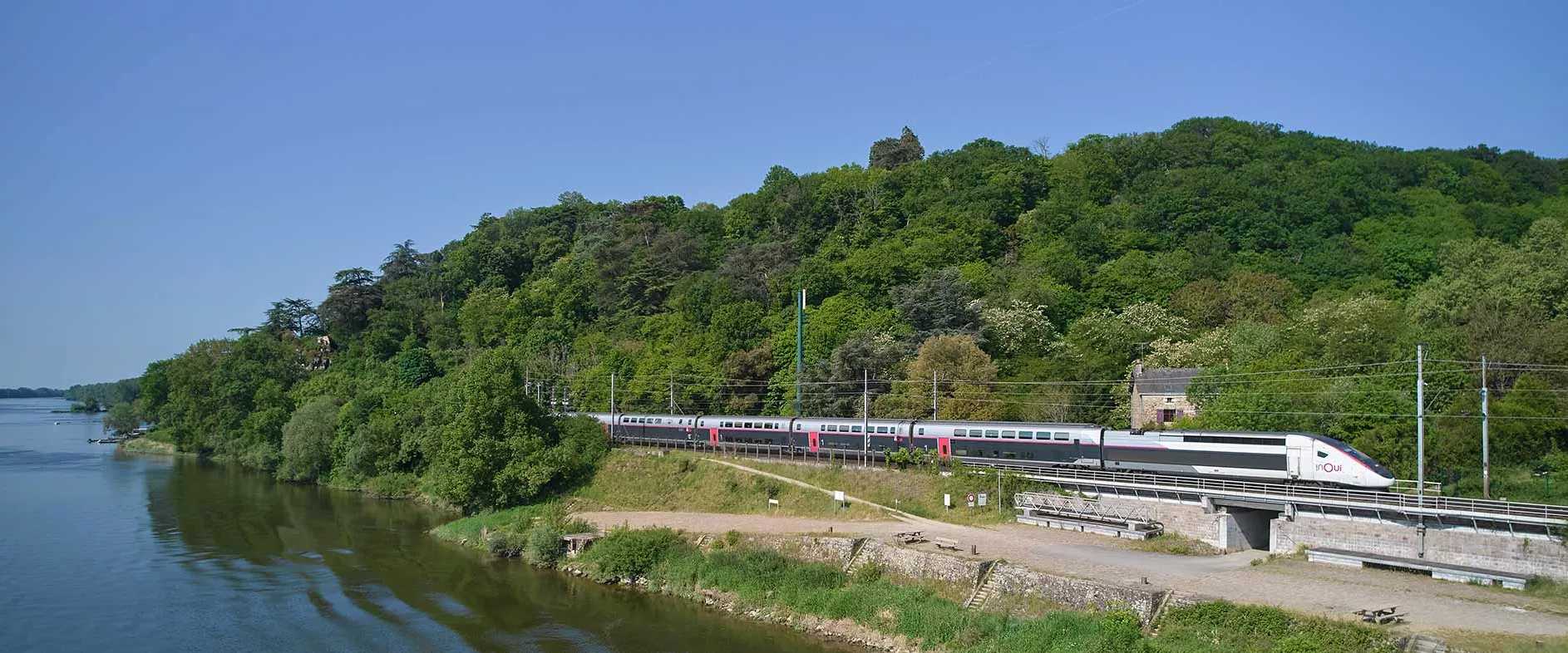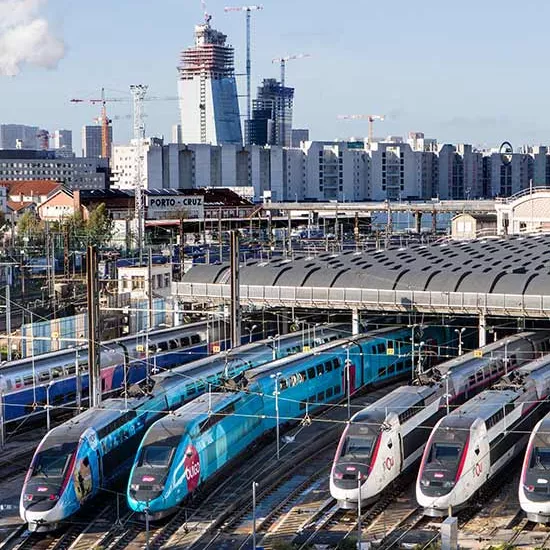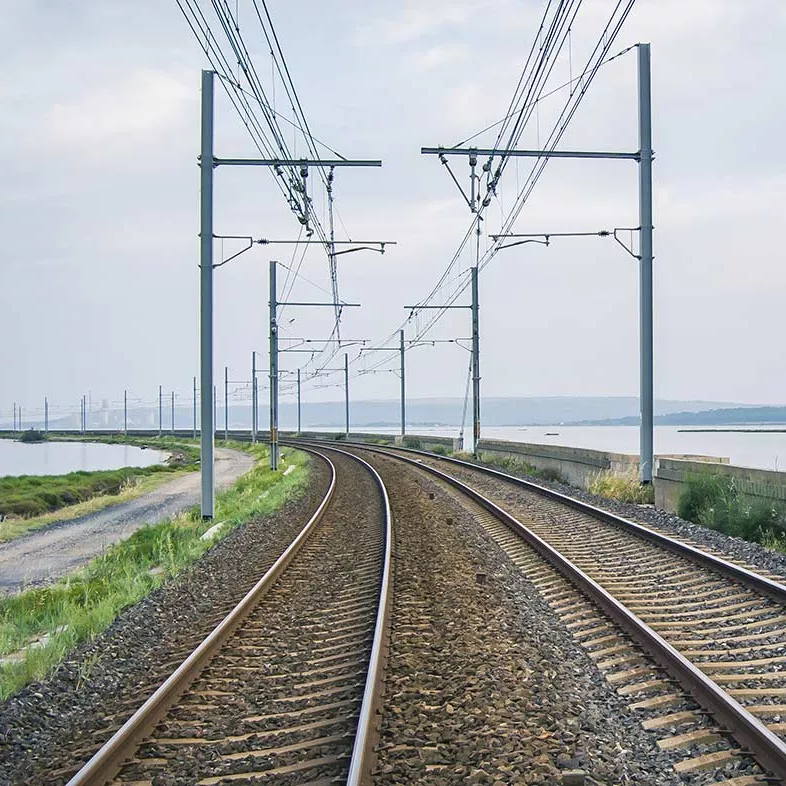
What improvements will train tracking bring?
Next-generation train tracking could cut commissioning and maintenance costs, get more trains into circulation, and improve passenger information. Valentin Barreau, SNCF’s Train Tracking Project Manager, tells us more.
Meet Martine: a green freight locomotive pulling a lone Corail passenger car, operated by the French Railway Testing Agency (AEF). It may not look like much, but this test train could change how our customers travel in the future. How? By improving train localization.

15,000
trains a day

1
train positioning error per billion hours

30,000 km
of French rail network
Paving the way towards accurate, continuous train tracking...
Every day, on France’s 30,000-km rail network, some 15,000 trains perform a complex ballet, orchestrated by a combination of lineside signalling and beacons in the track. But this system can only approximate the location of each train. That’s why SNCF teams are now testing technologies that will open the door to accurate, continuous train tracking.
... and a major shift in rail travel
What exactly is “train tracking”?
We can define tracking as the function that gives a train continuous, real-time, on-board information on its position, speed, and direction.
How are trains localized now?
The French signalling system divides our network of track into sections called blocks. To maintain a safe distance between trains travelling in the same direction, each block can only contain one train at a time. As the trains move along the line, they’re localized by beacons in the track. An odometer1 tracks the train as it moves away from each beacon.
What are the limits of this tracking system?
As the distance between the beacon and the train increases, the train’s position becomes less accurate. That’s why we need axle counters, track circuits, and other ground-based devices to make sure the train’s positioning is correct. Which is what keeps it safe.
So there’s room for improvement.
Yes! Our project aims to track trains more accurately. The goal is to pinpoint each train’s location in real time, without relying on the lineside systems I just mentioned, which are expensive to install, maintain, and upgrade.
Geolocation has become a part of daily life—from smartphones to exercise to route mapping. It seems odd that we can’t track trains continuously in real time.
Trains run in complex environments—under buildings, in forests, through tunnels. A conventional GPS chip can’t deliver accurate train positioning in these places. More importantly, it doesn’t meet the demanding safety standards that rail operations require. To give you an idea, the new tracking system we’re working on can’t make more than one undetected error in a billion hours. That’s once every 120,000 years—which is 100 times higher than the safety standard for air transport.
How will the new tracking system work?
We can’t rely on the Global Navigation Satellite System (GNSS2) alone, so our idea is to combine it with other sensors. What we’re using is an inertial navigation system and a phonic wheel sensor that measures the rotational speed of the wheel. That gives us the train’s speed. We’re also relying on rail maps to position the train safely on its track. In a way, maps act as an additional sensor because they let us project where the train will go.
How much progress have you made towards these new tracking technologies?
We’re collecting as much data as we can, to add to our experience and make our tracking system more mature. A filtering algorithm combines data from the sensors to give us the exact position of the train. Meanwhile, an integrity loop calculates an error boundary around the position produced by the algorithm. It’s this error boundary that is linked to the rate of 1 error per billion hours.
And how do you collect all the data?
We’re developing sensor racks to install aboard a high-speed TGV, RER C and D commuter trains, and a TER regional train. Meanwhile, we’re using a test train named Martine to pre-test the racks and run trials.
You mentioned commercial service. Concretely, how will train tracking change daily life for passengers?
There will be 2 big changes: increased punctuality and better passenger information. Once we have accurate, continuous train tracking, we’ll be able to run trains closer together and make traffic flow more smoothly. In short, our TGV, TER and Transilien lines will be able to handle more trains per hour, which should allow rail operators to offer their passengers more trains. We’ll also be able to give travellers much more detailed information on arrival times, as well as any delays or incidents.
How?
We’ll have accurate, real-time information on train speed and position. That will let us optimize overall traffic and individual train speeds if another trainset breaks down on the track ahead.
When will you start using these new tracking tools?
The safety standard for passenger information is lower, so we can roll that out now. Transilien has put in the first request, and preliminary testing is now underway. But for the rail traffic system, where satellite tracking will allow us to run more trains on existing lines, the bar is higher. That probably won’t go into commercial operation until 2030.